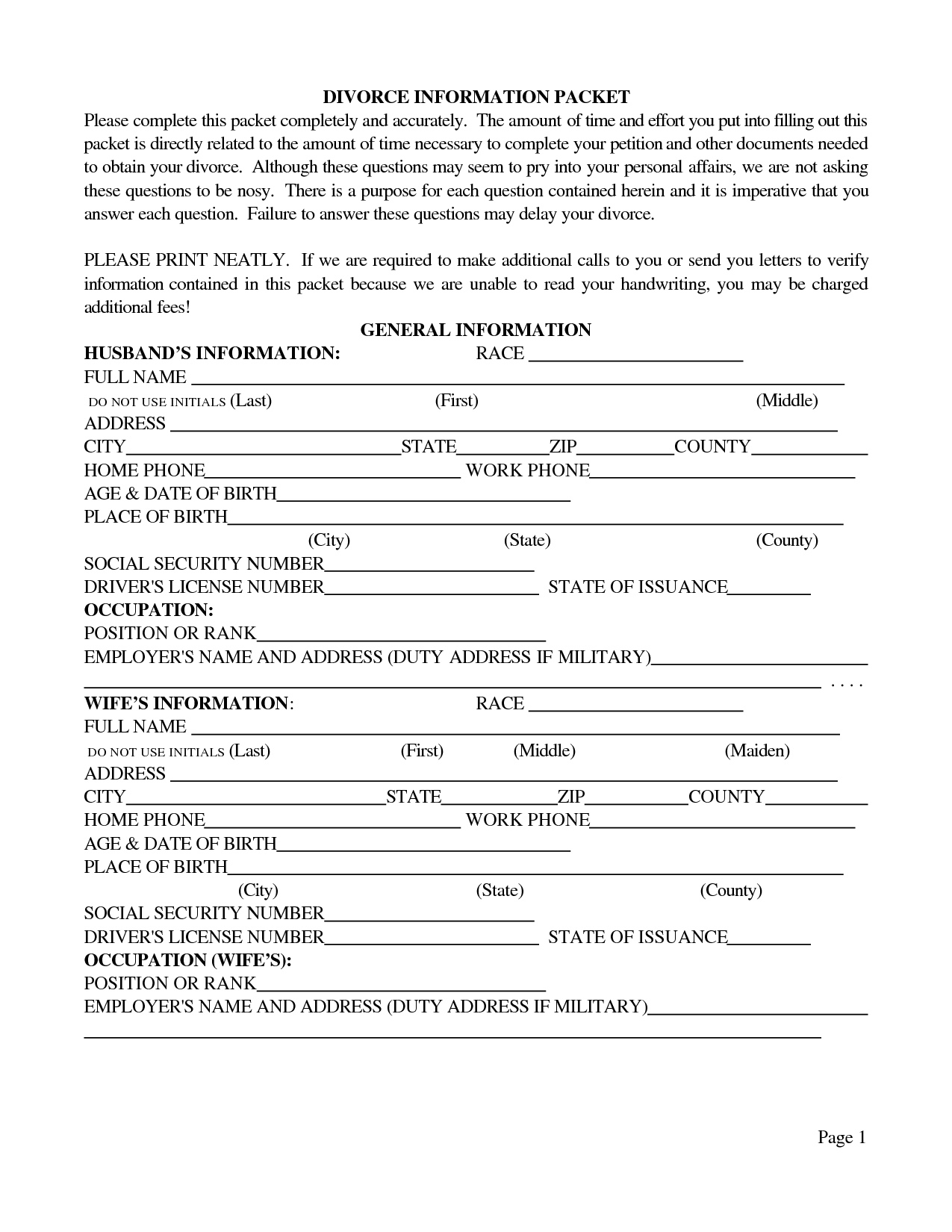DIY Divorce Papers: Is It Right for You?

Embarking on a divorce can feel like navigating through a labyrinth of legal paperwork and emotional turmoil. While most people might automatically reach out to lawyers for guidance, the concept of handling your divorce independently through DIY divorce papers has been gaining traction, thanks to the internet's treasure trove of legal resources. But how do you know if this route is the right choice for you?
What Are DIY Divorce Papers?

DIY divorce papers refer to documents you can access online or from your local court clerk’s office that guide you through the process of filling out your own divorce papers without the immediate involvement of an attorney. Here’s a breakdown:
- Forms: These are typically the standard forms that a court would expect for initiating a divorce, including petitions for dissolution of marriage, child custody agreements, and property settlement agreements.
- Instructions: Websites or kits usually provide a step-by-step guide on how to fill out and file these forms.
🔍 Note: Always check if your local jurisdiction offers specific forms since divorce laws can vary significantly from one place to another.
Advantages of DIY Divorce

Cost-Effective

The financial benefits are often the most compelling reason to consider DIY divorce papers:
- No attorney fees which can be substantial, especially in contested divorces.
- Reduction in additional legal expenses like filing fees, mediation costs, or expert witness fees.
Convenience

- Time-Saving: Without the need to schedule meetings, you can work at your own pace.
- Flexibility: The ability to file online or by mail offers a level of convenience that traditional law firm engagements might not.
Amicable Process

If both parties are:
- On amicable terms
- Agree on most aspects of the divorce
- Willing to communicate openly and honestly
Disadvantages of DIY Divorce

Complexity

Divorce law can be:
- Intricate with nuances that change frequently
- Subject to misinterpretation, which might result in filing errors or missing crucial information
Legal Advice

DIY methods lack:
- Professional legal counsel: Forms might not cover every scenario, and without an attorney, you might overlook potential legal advantages or implications.
Disputed Issues

When there are disagreements:
- On child custody
- Spousal support
- Asset division
- Or any contentious issue, the absence of a mediator or lawyer can make the process much harder and more confrontational.
When DIY Divorce Might be Right for You

- Uncontested Divorce: If you and your spouse agree on most things, DIY might be the way to go.
- Simple Estates: No complicated assets, businesses, or large retirement plans to divide.
- Financial Transparency: Both parties fully disclose and agree on the financial status.
- Legal Guidance: Even if you’re filling out the papers yourself, you might opt for a limited scope representation from an attorney for complex legal advice.
Steps to Follow for DIY Divorce

1. Research

Understand your state’s divorce laws:
- Residency requirements
- Grounds for divorce
- Forms needed
2. Gather Documents

Collect:
- Financial statements
- Tax returns
- Property deeds
- Child-related documents
3. Prepare Your Paperwork

- Download: Forms from the internet or pick up from the court.
- Fill: Out the forms accurately, being meticulous.
- Proofread: Double-check for errors or missing information.
4. Filing

Submit the forms to your local court:
- Pay Fees: Filing fees can be found online or at the clerk’s office.
- Serve: Your spouse with the papers as per your state’s laws.
🖋️ Note: Remember, each state has different service rules; not following them correctly can lead to delays.
5. Mediation or Negotiation
Even in DIY divorces, you might need:
- To negotiate terms with your spouse
- Seek mediation to resolve disputes
6. Court Review
- The judge or court reviews your submitted paperwork.
- They might schedule a hearing if needed to discuss any issues.
7. Finalization
Once all is in order:
- Divorce decree is issued.
- Divide assets, child support, alimony, and finalize custody agreements.
Summary

DIY divorce offers a straightforward path when both spouses are on the same page and financial transparency is maintained. It can save both time and money but requires a proactive approach to gather information, understand legal requirements, and diligently prepare all necessary paperwork. However, if your situation involves complex assets, disputes over custody, or contentious issues, professional legal advice is often indispensable. Remember that even with a DIY approach, consulting an attorney for specific advice or reviewing paperwork can provide peace of mind and potentially prevent costly mistakes. Ultimately, DIY divorce papers can be the right choice for you if you’re willing to invest the time to understand and execute the process meticulously.
Can I handle a divorce by myself?
+
Yes, with DIY divorce papers, you can handle the process yourself if it’s uncontested, you understand your state’s laws, and your situation is relatively straightforward.
What are the risks of a DIY divorce?
+
Main risks include making legal errors, overlooking beneficial aspects of the law, or not fully understanding your rights and obligations, potentially leading to an unfair settlement or procedural issues.
How long does a DIY divorce typically take?
+
The time varies by state but typically ranges from 3 to 6 months if uncontested and assuming all paperwork is filed correctly. Delays can occur if there are disputes, errors, or complex issues.



